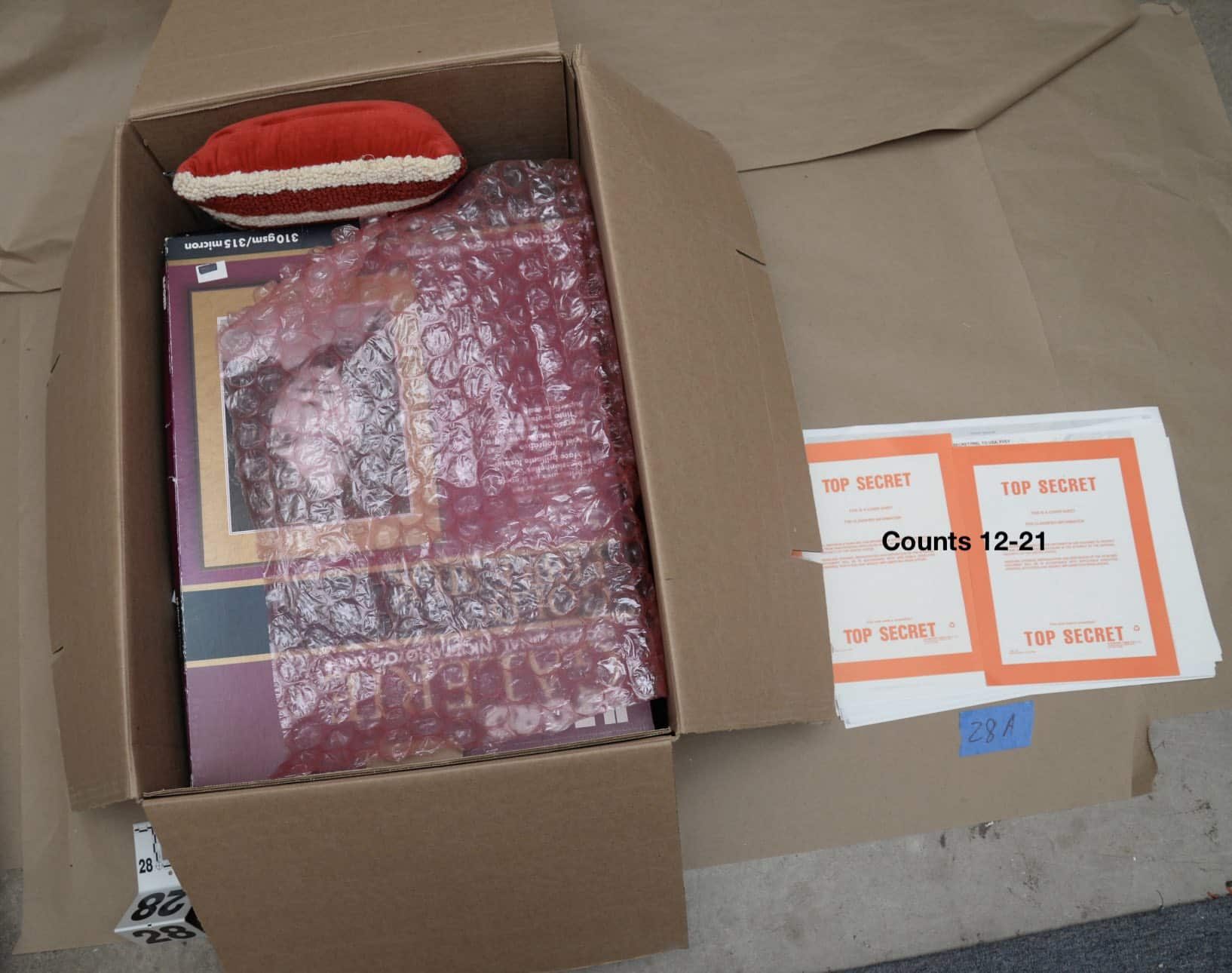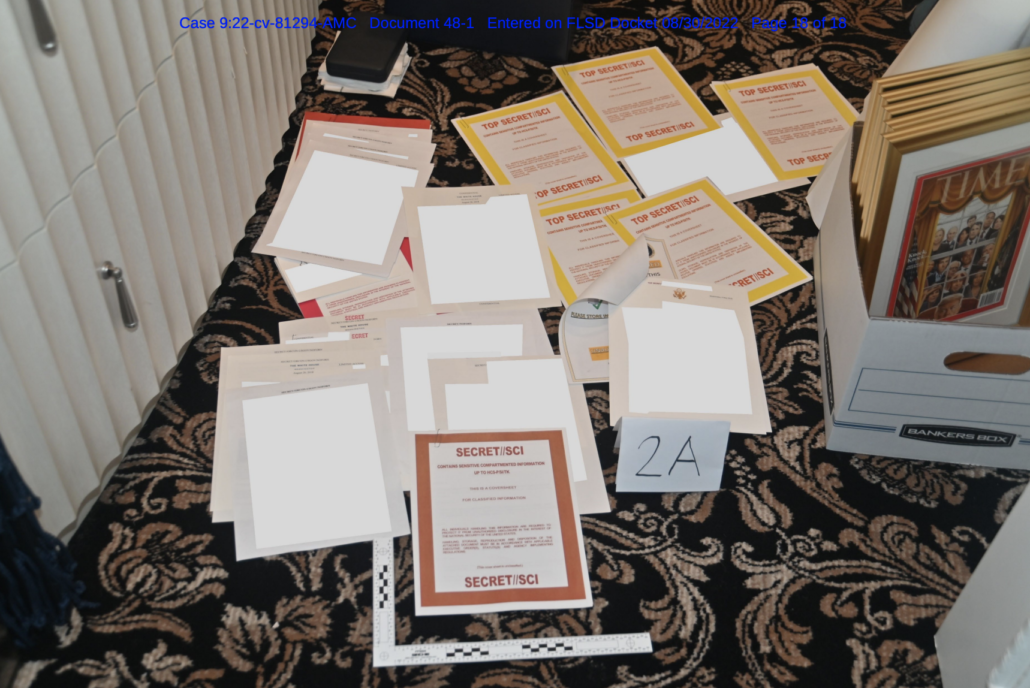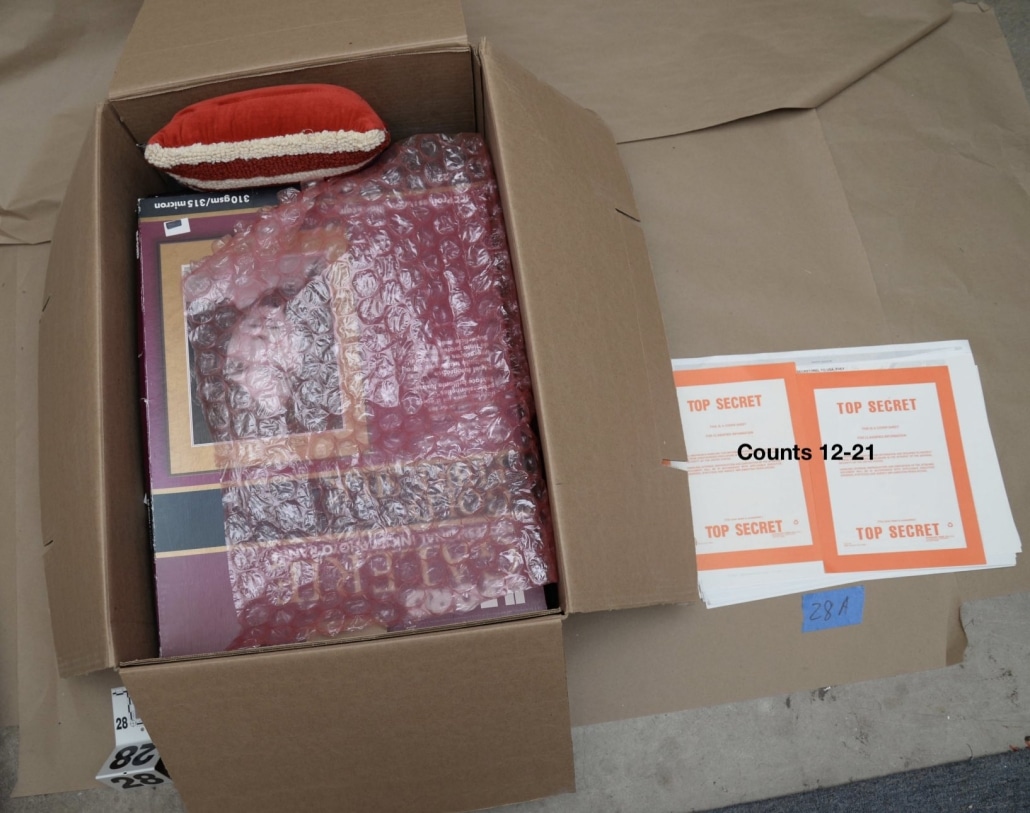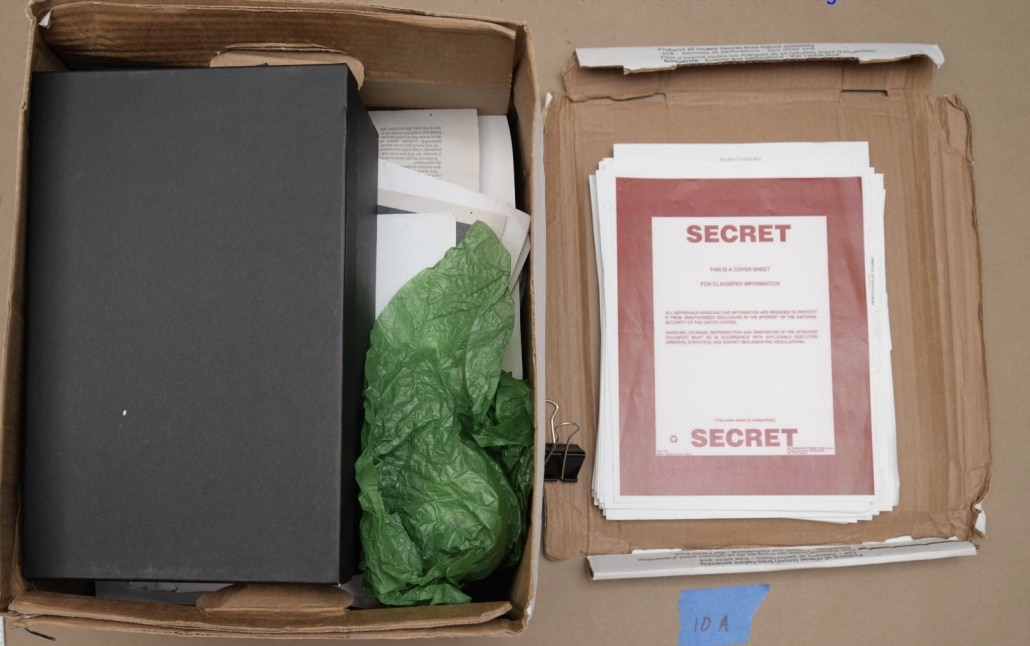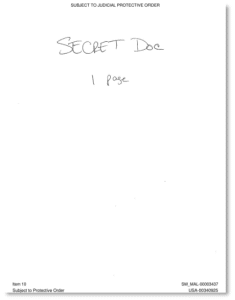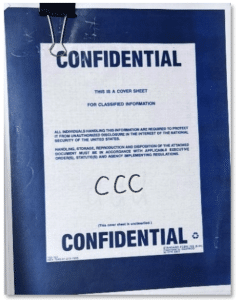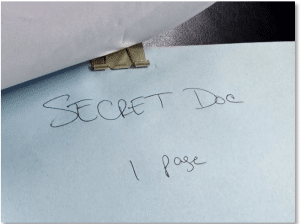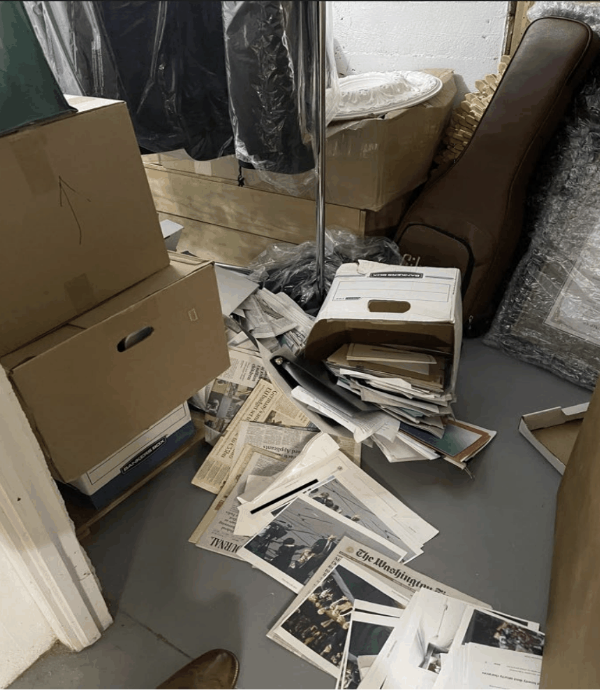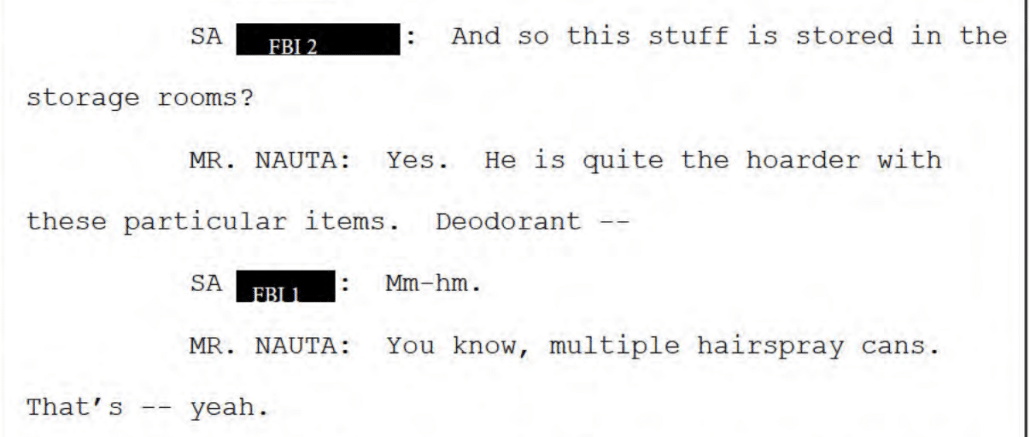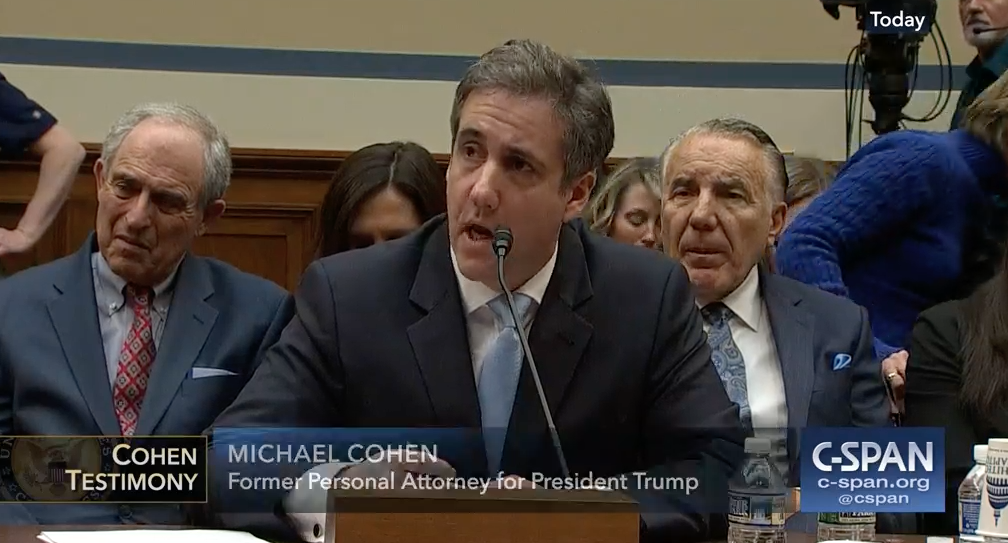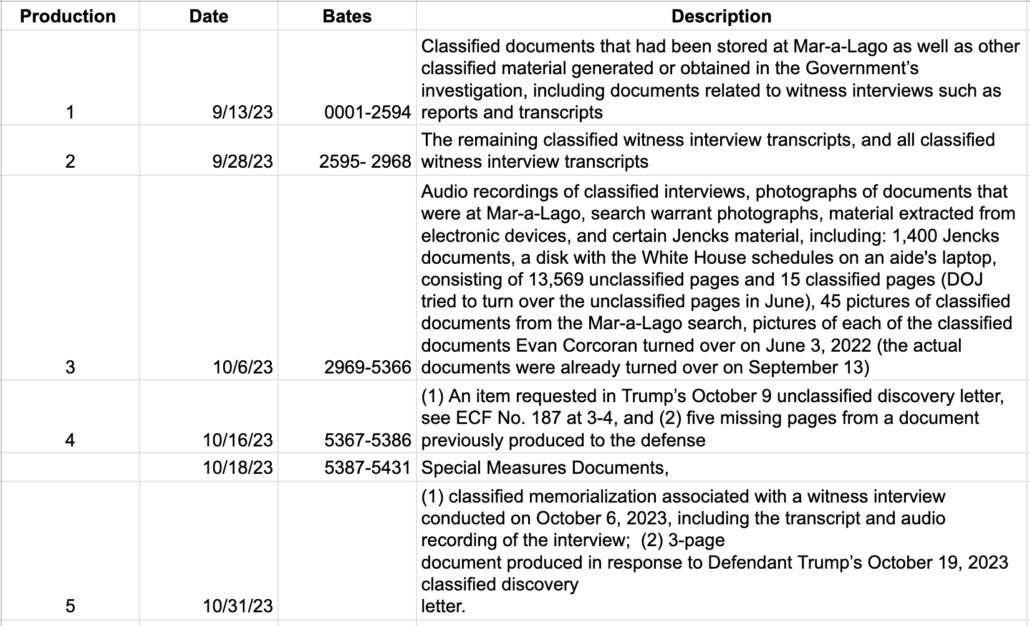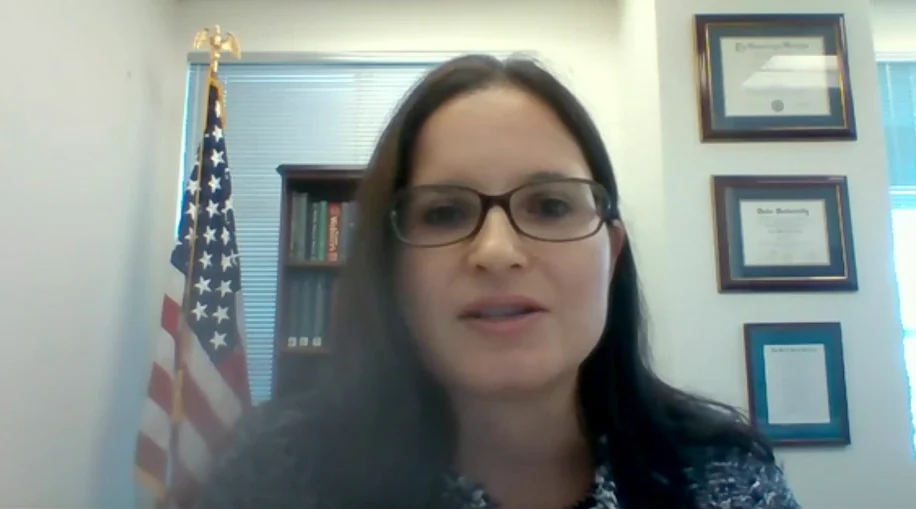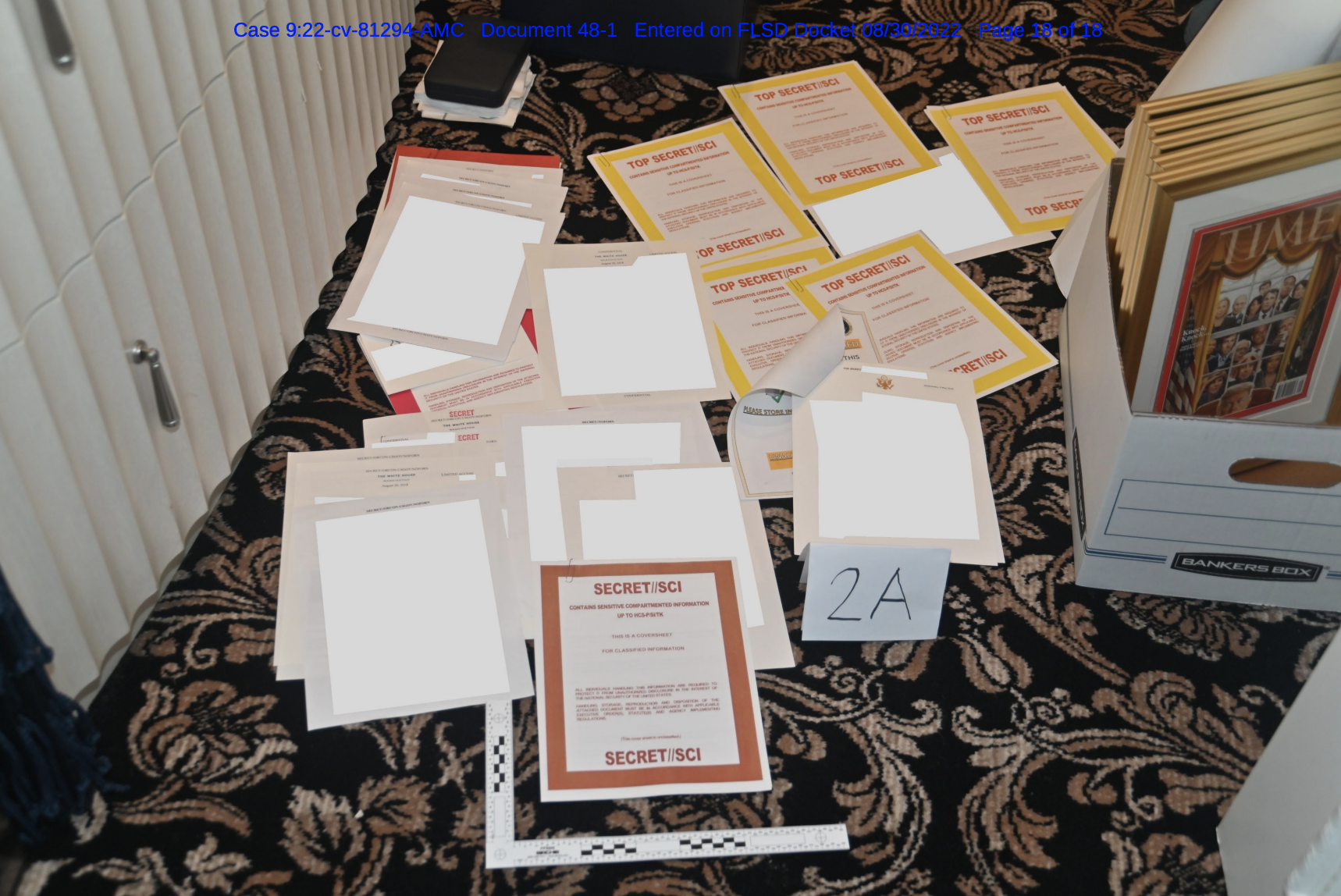The Nuclear Weapons Document Trump Stashed under Bubble Wrap and a Christmas Pillow
As noted, Jack Smith has filed his response to Trump’s bid to throw out his stolen document indictment because the order of certain boxes was not retained.
A key part of Smith’s response argues that document order within boxes hasn’t been central to any of Trump’s defenses to date, but in any case, his complaint about document order is a ruse (though Aileen Cannon likely won’t treat it as such). That’s partly because of the sheer variety of things found in boxes with classified documents, including “newspapers, thank you notes, Christmas ornaments, magazines, clothing, and photographs of himself and others,” making it far more difficult to retain document order.
And that’s partly because Trump kept moving items within boxes and boxes themselves around. The government included a Molly Michael interview, for example, where she described that some of the contents of boxes that she and Walt Nauta brought to Trump for sorting in advance of him returning 15 boxes to NARA in January 2021 got consolidated.
And pictures included as exhibits show that the spill of boxes Nauta discovered in the storage room was more extensive than previously disclosed — involving at least four boxes. Other exhibits show how the classified document exposed as part of that spill was found in the storage closet in box A-35 over a year later.
As the response and previous filings describe, that document — a Five Eyes document dated October 4, 2019 — was charged as Count 8.
A table included in the filing describes where all the charged documents were found.
So three of the charged documents were found in this box, the blue leatherbound box found next to Diet Coke bottles and some weird cult painting of Trump, in a closet off his office.
Those three documents, all classified Top Secret and at least two of which date to May 2018 (Matt Tait speculated after the search that one was a PDB pertaining to Trump’s withdrawal from the Iran deal), would be among the items included in this evidence picture.
This box is actually one of the only ones where the filter agent didn’t retain document order at all, so if Judge Cannon were to throw out charges because of document order (which would itself be unprecedented), it would implicate as few as three of the charges.
Side note: The narrative on this box confirms that Julie Kelly is a dumbass propagandist. It confirms that some of the documents in the box had cover sheets on them, and there were other loose cover sheets in the box.
After FBI 13 placed all of the contents of the blue box back in the box, an ERT photographer took photos of the blue box with the cover off. Ex. 12. FBI 13 alerted the Case Team that s/he had found documents marked classified, and after s/he completed his/her privilege review, two Case Team agents reviewed the box and found numerous documents with classification markings, some of which had classification cover sheets already attached, as well as loose classification cover sheets. [my emphasis]
Julie the Propagandist is nevertheless reading a different part of the filing — which described cover sheets that are not in this picture — and claiming she was right.
Seven of the documents were found among these boxes in the storage room (the box with the rectangle is where the FVEY document caught in Nauta’s December 2021 picture ended up).
And fully ten of the documents charged were found under some bubble wrap and a Christmas pillow in this box, which would have been found in the storage room, perhaps on the opposing wall to the picture above.
That means that one of the documents stashed under the bubble wrap and the Christmas pillow, charged as Count 19, was classified Formerly Restricted under the Atomic Energy Act, meaning it pertains to US nuclear weapons.
Just about the only interesting treatment of document cover sheets happens to pertain to this box, which also happens to be the one that Stan Woodward started this whole stink about.
As Smith’s filing explains, the box included 32 documents with classification markings (of which 11 were confidential), all in one binder (could this be the Crossfire Hurricane binder?!?!). Because everything in the binder was related, it was impossible to reconstruct which placeholder went with which document.
11 The initial placeholder sheets that were put in Box A-15, unlike most of the others, included only the classification level and the number of pages. Because of the large number of documents with classification markings (32) in box A-15, which were found in a binder of information and therefore similar in nature, it was not possible for the FBI to determine from the initial placeholder sheets which removed documents corresponded to which classified document. In this instance, therefore, the FBI left the initial handwritten placeholder sheets within the binder to denote the places within the binder where the documents with classification markings were found. The FBI provided this binder for scanning at the top of the box. In addition, the FBI placed in the box 32 new placeholder sheets representing the 32 documents with classification markings in the binder. It placed them where the binder was within the box when the investigative team obtained it. None of the 32 documents is charged.
But as described, none of them are charged.
To sum up, then. Of the boxes from which charged documents were found, only one — the blue leatherbound box found in Trump’s office — clearly lost document order (but partly that would derive from there being so many classified documents found). The one box where document order was a problem — the one that Stan Woodward made a stink out of — has no charged documents.
But thanks for helping us clarifying, Stan, that Trump stored his document about nuclear weapons under a Christmas pillow.
Links
Exhibit 1: Search warrant and affidavit
Exhibit 2: Interview report with person 81 describing how obsessive Trump was about his boxes at the White House
Exhibit 3: Additional copies of 2021 spill of four boxes
Exhibit 4: Evidence photo showing boxes stacked in storage room at beginning of search
Exhibit 5: 230322 interview with Molly Michael describing how Trump consolidated some of the boxes she and Walt Nauta brought Trump in 2021
Exhibit 6: 220817 302 documenting search of Mar-a-Lago
Exhibit 7: Interview transcript with Person 29 (Trump Organization official) describing how they turned off the CCTV server, but then had it turned back on directly at Mar-a-Lago during the search
Exhibit 8: Showing evidence picture of items 14 and 23, with classified docs pulled out
Exhibit 9: Photo log describing photos documenting search, including Trump’s office
Exhibit 10: Evidence photo of item 2
Exhibit 11: 302 from June 20, 2024 phone call with filter agent FBI 13 regarding the search of the leatherbound box
Exhibit 12: Showing how item 2 — the blue leatherbound box in Trump’s office closet with the most sensitive documents — was found next to coke bottles and a cult painting of him
Exhibit 13: Showing where classified documents were found
Exhibit 14: Documenting belated discovery of Top Secret document in box 57
Exhibit 15: Instructions for document handling for Special Master scan
Exhibit 16: Showing what random things were found in boxes 10, 19, and 28
Exhibit 17: 302 describing picking up additional classified documents from Molly Michael on August 9
Exhibit 1: 220926 After Action Report on search, describing filter teams
Exhibit 2: Version of search warrant return
Exhibit 3: 220809 email documenting meeting with Molly Michael to collect more classified documents, which Trump misrepresented
Exhibit 4: 230605 documentation of scan process
Exhibit 5: 220928 email describing scan process, including replacement of cover sheets
Exhibit 6: 231128 memorialization of 230711 meetings with filter team to discuss search
Exhibit 7: 220806 hand-written notes memorializing planning for search
Exhibit 8: 231009 Todd Blanche discovery request
Exhibit 9: 231016 DOJ response
Exhibit 10: 240521 memorialization of May 2024 meetings between FBI and Special Counsel about search
Exhibit 11: 240324 hand-written notes of interview with privilege team
Exhibit 12: 2405?? hand-written notes of interview with privilege team
Exhibit 13: 240523 discovery letter turning over filter team materials
Exhibit 14: 240305 memorialization of item split
Exhibit 15: Notes showing Stan Woodward looking in Box A-14 (of which he took a picture), A-15, A-16, A-45, A-71, and A-73
Exhibit 16: 220830 documentation of evidence split

